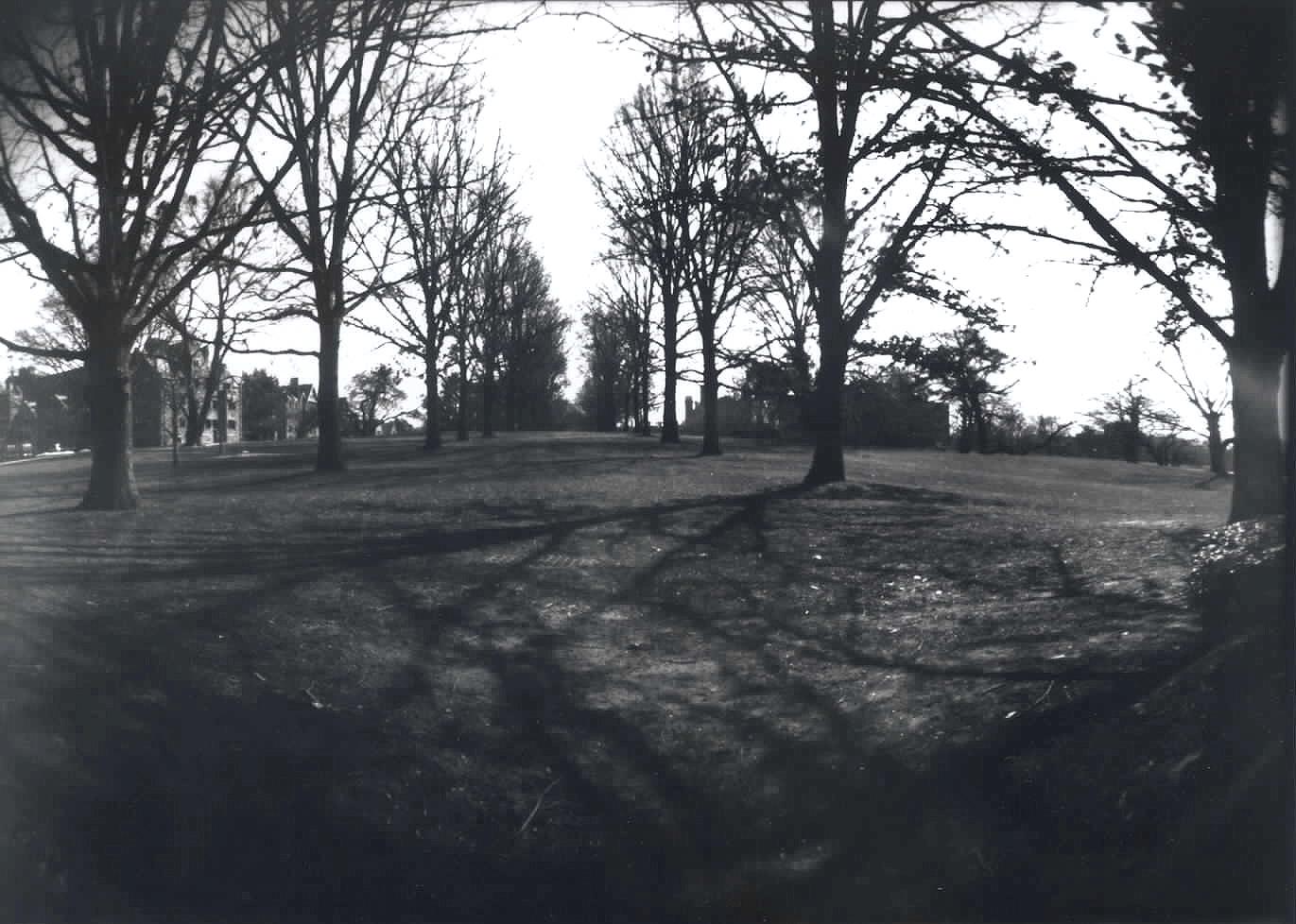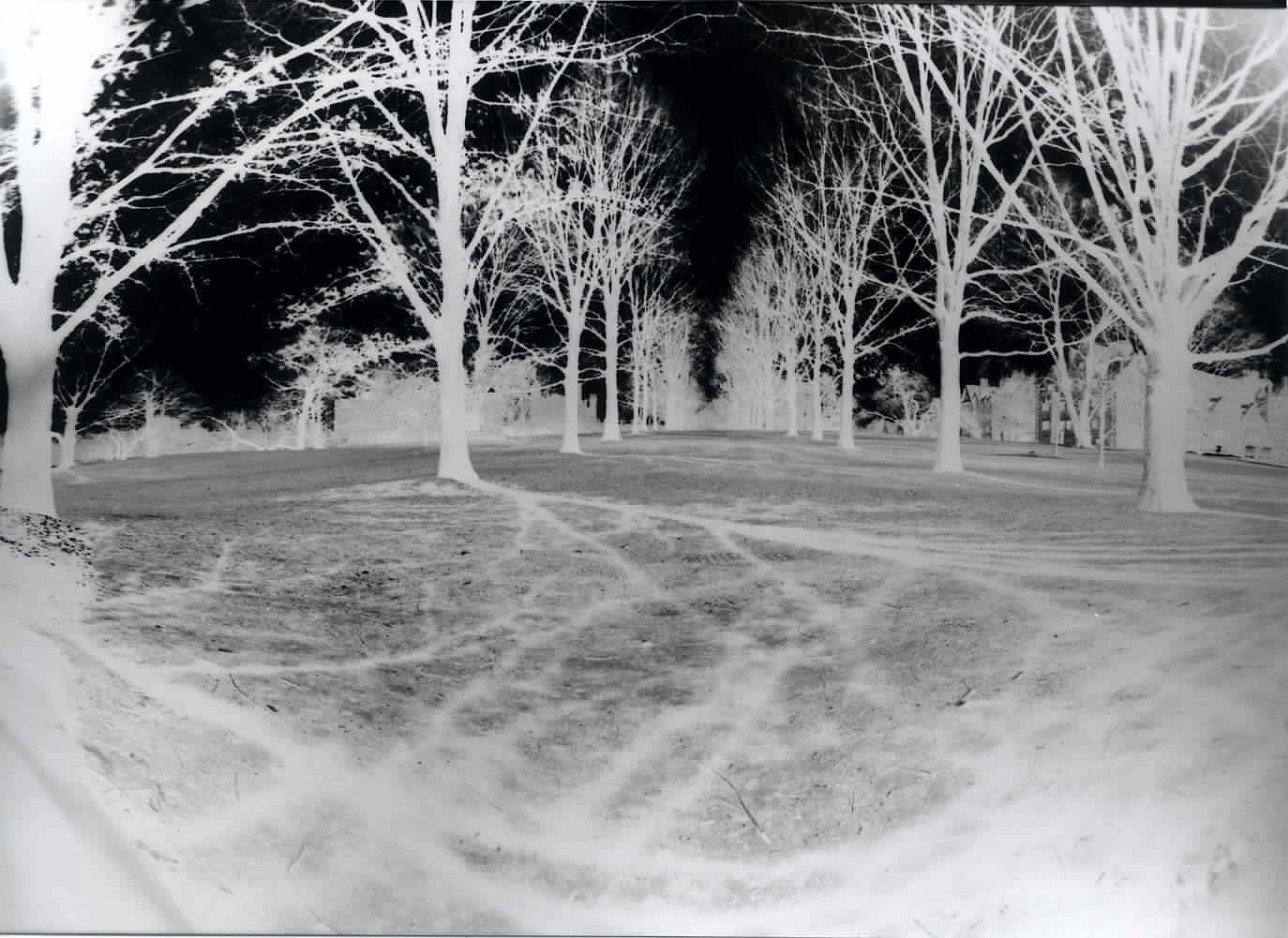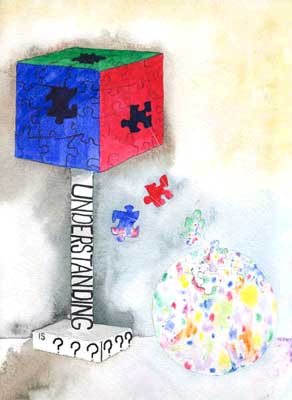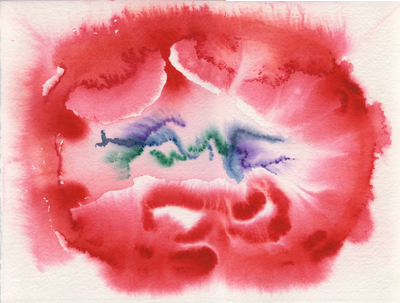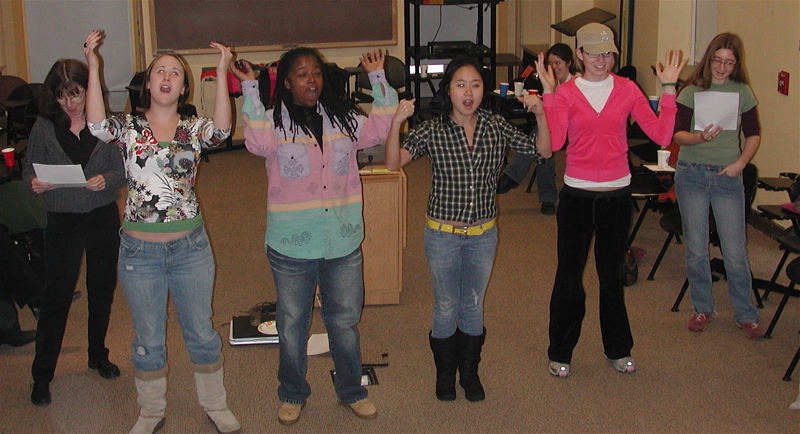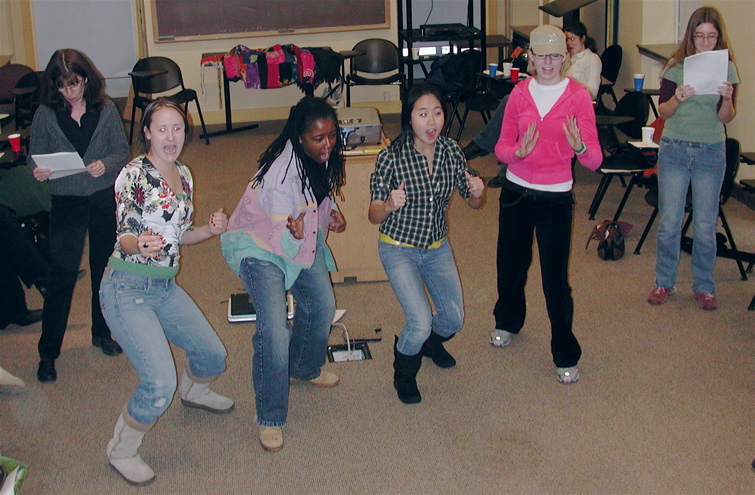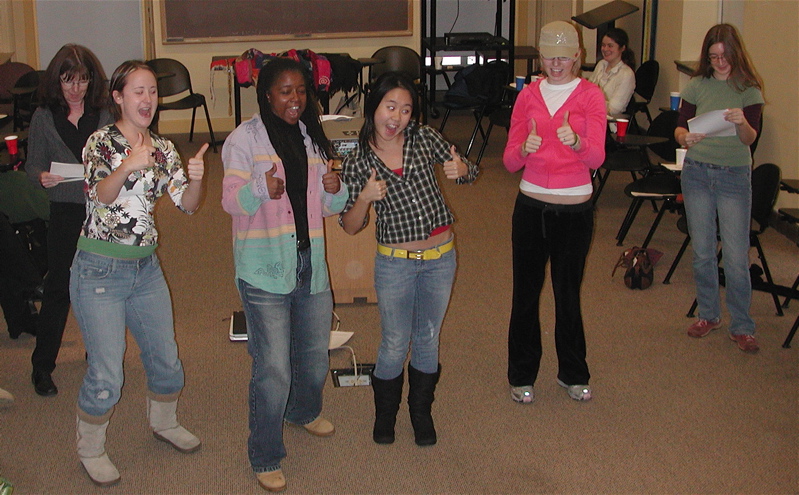In brief (courtesy of Paul Grobstein, "The Bipartite Brain...):
The human brain consists of a "frog brain" surrounded by a large amount of neocortex.
"It is an 'idealist' sitting on the back of a 'pragmatist.'"
Sensory inputs come into the unconscious.
They are turned into stories (=awareness, experiences, emotions, thoughts) "upstairs."
Who knows what's going on down below??
We can only "get to it" obliquely, by conscious deliberation.
This is the "negative space" of--
and rich resource for--all academic work.
And there are multiple ways of representing this process.
Paul Grobstein's "Bipartite Brain"
and Sharon Burgmayer's (rotated) "Interface"
My own version is more "architectural;" it involves an image of

an elaborate Victorian structure, with the sort of upstairs my grandmother had: rooms crammed full with God-knows-what, each fulfilling some "quasi-independent parallel" function and the sort of basement she had, too: where everything got dumped, wherefrom everything was delivered upstairs (canning jars full of produce, coal for the furnace...). It was a dusty, musty, unfinished place, with dirt walls and floor, hard to see into, hard to find things in, filled with snakes....Not a place you'd want to go into...
What the McBrides and I have done, over the past 15 years,
is keep one another company, as we go down into that cellar,
digging up and bringing together what Woolf calls "female" and "male,"
what Paul and Sharon call "unconscious" and "conscious,"
what I have come increasingly to understand as "playful" and "disciplined,"
and what (in terms of writing) I understand as the
interactive processes of "free associating" and "editing."
My 15-year-long writing conversation with the McBrides
has increasingly acknowledged, explored and celebrated the first half of these pairs.
Pregnant title waves
Topple these temples,
Pounding them to sandcastles
From which one lone turtle tracks toward the sea.
A gentle breath.
Another surge--urgent,
And firm hands
Cradle sure this temp'st borne surfling
Emerging from the sea in me:
my self.
Sarah Campbell. Emergen/t/cy. (Fall 1994)
|  |
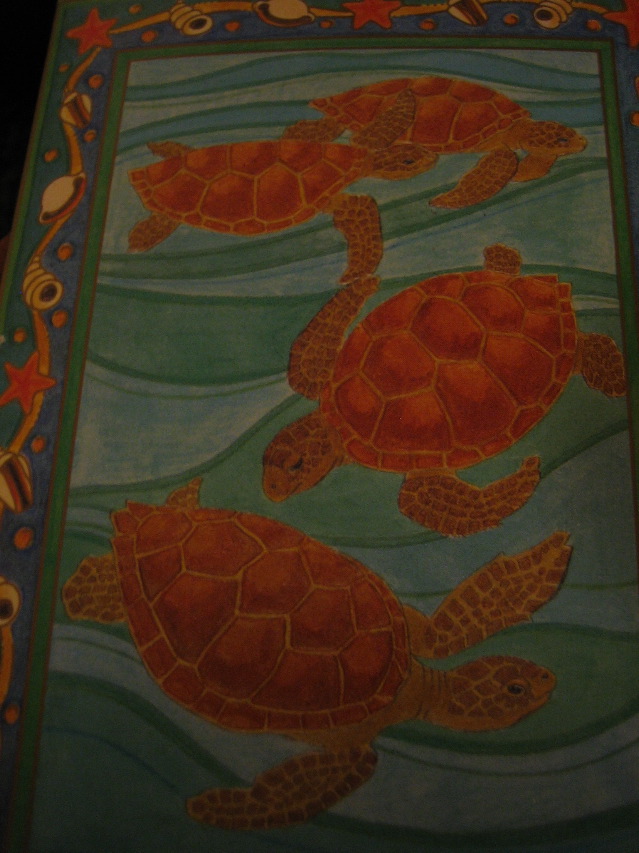 |
Picture turtles being flung at you from every direction, some knocking you on your head. Kamikaze turtles diving at you. And there you are trying to catch them. But you can't. They're too heavy and there are too many turtles for your eyes to target one....at Bryn Mawr we come in contact with turtles that travel in large numbers and at high velocity. Bryn Mawr is in the turtle flinging business....
I wonder why my contact with turtles has to take this frenzied form....Bryn Mawr is acclimating women to the type of schedule they will be expected to run on in the work world....all this high volume turtle catching is in line with....the mass production ideology of corporate America....Bryn Mawr students going out into the work force will be well conditioned to make the sacrifices that employees are expected to make for their jobs....We need to question the value system....What is the value of giving more reading than a student can possibly do? Or asking students to churn out papers in assembly line fashion?....Education shouldn't be like mass production....I am disturbed by the bombardment....I'm being challenged by the turtles. I don't want to turn away from the challenge....
Belkys Lopez. "Turtle Storm." (Spring 1997)
|
In the past 5 years, as I found my way to the
limits of the metaphor of "turtles all the way down,"
McBrides began exploring other images:
"The Science Fiction saga of Princess Krispie" (Fall '02)
(assaulted by aliens and saved by a prince who later assaults her in turn)
--as described in Story-Telling in (At Least) Three Dimensions:
An Exploration of Teaching Reading, Writing, and Beyond
Greensleeves' Lament, by Kathleen Myers (Fall '04)
("I have not gone anywhere. I am here.")
Da Bes Ninja Beast Freakin' Story
of a Time that You Eva' Heard FOR REAL
Which Only Exists in Your Imagination but
Actually Might Have Something to Do
With What You are Doing Here
By Jessica Brody, Joanne Bunch, Leslie McTavish,
Sarah Placke, Amanda Root and Virginia Tseng (Fall '05)
(in which a legion of Owls peck their way
through the surface of the bubble surrounding
and protecting Da Bes School for Girls and--
in the shock of fresh air--the girls find they can think clearly).
Just as important as mining the riches of the unconscious
is taking the time to revise what comes up.
My own recent writing experiments in this vein:
Let Me...Revise
Emerson Fibs
To conclude:
I invite you to write your own "fibs,"
emergent from the prose you wrote
about the photographs with which we began.
Read 'em aloud. Pass 'em in.
How might this writing be of use,
as we work together on the continuation and
extension of the McBride program?
For me, the practical use-value of "negative space"
is the recognition--following Dr. Seuss--that
a turtle stack can be upended:

Dr. Seuss said that Yertle the Turtle was modeled
after the rise of Hitler. That story ends,
"And the turtles, of course...
all the turtles are free,
As turtles and, maybe, all creatures should be."


